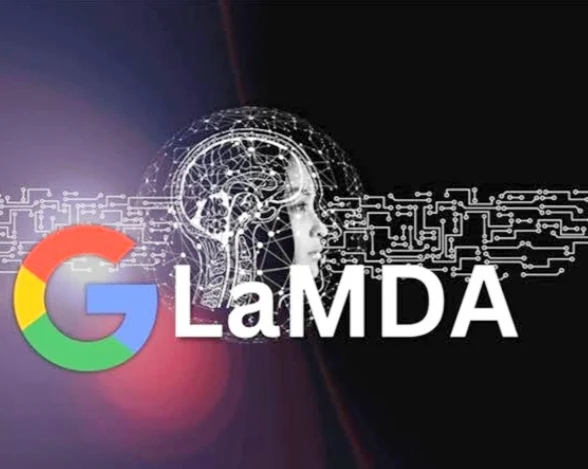LaMDA: Google's AI Takes Conversation to a New Level
LaMDA (Language Model for Dialogue Applications) is making waves in the world of artificial intelligence (AI). Developed by Google AI, LaMDA isn't your average chatbot; it's designed to engage in natural, flowing conversations that mimic human interaction.
This article dives into the core functionalities of LaMDA, explores its potential applications, and touches on a recent controversy that highlights the importance of responsible AI development.
Unveiling LaMDA's Strengths
LaMDA stands for Language Model for Dialogue Applications. It's a cutting-edge artificial intelligence (AI) technology developed by Google AI. Here's a breakdown of what LaMDA is:
- Focus: Designed specifically for engaging in natural, flowing conversations that mimic human interaction.
- Capabilities:
- Understands and responds to complex questions and requests, going beyond simple keyword recognition.
- Engages in discussions on a broad range of topics.
- Adapts to different conversation styles and contexts.
- Applications: LaMDA has the potential to revolutionize how we interact with technology in various fields, including:
- Chatbots and virtual assistants
- Educational tools and tutors
- Customer service applications
Here's what LaMDA is NOT:
- A simple chatbot with pre-programmed responses.
- An all-knowing AI with unlimited knowledge.
- Sentient (at least, there's no confirmed evidence as of yet).
LaMDA represents a significant step forward in conversational AI, but its development needs to be approached responsibly with ethical considerations in mind.
LaMDA stands out for its ability to:
- Grasp Complexities: It can understand and respond to nuanced questions and requests, going beyond simple keyword recognition.
- Topic Versatility: LaMDA isn't limited to specific areas of knowledge. It can engage in discussions on a wide range of topics, making it a valuable tool for learning and exploration.
- Conversational Chameleon: LaMDA adapts to different conversation styles and contexts. Whether you prefer a casual chat or a more formal interaction, LaMDA can adjust its tone and approach.
LaMDA's Functionality at a Glance
Here's a table summarizing LaMDA's key functions:
| Function | Description |
|---|---|
| Understanding Complex Queries | Processes and responds to intricate questions and requests. |
| Engaging in Discussions | Participates in conversations on a broad range of topics. |
| Adapting to Conversation Styles | Adjusts its tone and approach to fit different conversation styles and contexts. |
A Glimpse into LaMDA's Future
These strengths position LaMDA for exciting applications in various fields:
- Enhanced Customer Service: LaMDA-powered chatbots can provide more natural and informative customer support experiences.
- Personalized Learning: Imagine educational tools that converse with students, tailoring explanations and adapting to their learning pace.
- Virtual Companions: LaMDA has the potential to create engaging virtual companions that offer conversation and support.
The LaMDA Conversation: A Spark for Debate
In 2022, a Google engineer claimed LaMDA had achieved sentience, sparking debates about AI safety and consciousness. While this claim remains unconfirmed, it highlights the ethical considerations surrounding advanced AI development. As AI continues to evolve, ensuring its responsible development and deployment is crucial.
The Future of Conversation
LaMDA represents a significant step forward in conversational AI. Its ability to engage in natural conversations opens doors to a future where human-computer interaction feels more intuitive and engaging. However, alongside this progress lies the responsibility to ensure AI is developed and used ethically. LaMDA's story is just beginning, and it will be fascinating to see how it shapes the way we interact with technology in the years to come.
LaMDA: Google's Conversational AI Technology
LaMDA (Language Model for Dialogue Applications) is a cutting-edge artificial intelligence (AI) technology developed by Google AI, designed specifically for engaging in natural conversations.
Here's a table summarizing LaMDA's key features:
| Feature | Description |
|---|---|
| Purpose | Carry on open-ended, informative, and comprehensive conversations |
| Strengths | - Understanding and responding to complex queries and requests. - Engaging in discussions on a variety of topics. - Adapting to different conversation styles and contexts. |
| Applications | - Chatbots and virtual assistants. - Educational tools and tutors. - Customer service applications. |
| Controversy | - A Google engineer was fired in 2022 after claiming LaMDA achieved sentience, sparking debates on AI safety and consciousness. |
LaMDA's ability to hold meaningful conversations has the potential to revolutionize how we interact with technology. It can be used to create more engaging chatbots, provide informative and personalized educational experiences, and enhance customer service interactions. However, the recent controversy regarding LaMDA's sentience highlights the importance of careful development and ethical considerations as AI technology continues to evolve.
LaMDA: Google's Conversational AI Technology and its Potential Uses
LaMDA (Language Model for Dialogue Applications) is a revolutionary advancement in conversational AI developed by Google AI. It goes beyond scripted responses, aiming to engage in natural, flowing conversations that mimic human interaction. This article explores LaMDA's functionalities and dives into potential applications across various fields, along with a table summarizing its technological uses.
LaMDA's Technological Prowess
LaMDA's capabilities set it apart from traditional chatbots:
- Understanding Nuance: LaMDA can grasp intricate questions and requests, moving beyond simple keyword recognition.
- Topic Agility: LaMDA isn't limited by specific knowledge domains. It can engage in discussions on a broad spectrum of topics, making it a valuable tool for exploration and learning.
- Conversational Adaptability: LaMDA adjusts to different conversation styles and contexts. Whether you prefer a casual chat or a formal interaction, LaMDA tailors its tone and approach accordingly.
LaMDA's Technological Uses: A Glimpse into the Future
The table below highlights LaMDA's functionalities and their potential applications:
| LaMDA Functionality | Use Cases | Technology |
|---|---|---|
| Understanding Complex Queries | - Advanced virtual assistants like Google Assistant that can answer in-depth questions and complete complex tasks. - Educational chatbots that can provide personalized explanations and answer student inquiries. | Smart Speakers, Educational Apps |
| Engaging in Discussions | - AI-powered companions like virtual companions powered by Google AI that can engage in stimulating conversations on various topics. - Chatbots for customer service that can handle nuanced requests and provide comprehensive information. | Virtual Companions, Customer Service Chatbots |
| Adapting to Conversation Styles | - Tailored learning experiences in educational platforms that adjust communication style based on the user's preferences. - Engaging virtual tutors that can adapt their teaching approach to different learning styles. | Personalized Learning Platforms, Intelligent Tutoring Systems |
Beyond Technology: The Importance of Responsible Development
While LaMDA's technological advancements are impressive, it's crucial to consider responsible development. In 2022, a debate arose concerning LaMDA's potential sentience. This highlights the ethical considerations surrounding advanced AI. As AI continues to evolve, ensuring its development and deployment prioritize human well-being is paramount.
The Future of Human-Computer Interaction
LaMDA marks a significant leap in conversational AI. Its ability to engage in natural conversations paves the way for a future where human-computer interaction feels more intuitive and engaging. However, alongside this progress lies the responsibility to ensure AI is developed and used ethically. LaMDA's story is just beginning, and its impact on how we interact with technology in the years to come will be fascinating to witness.
Frequently Asked Questions About LaMDA: Google's AI
LaMDA (Language Model for Dialogue Applications) is a large language model developed by Google AI. It's designed to engage in conversations across a wide range of topics in a comprehensive and informative way.
General Questions about LaMDA
- What is LaMDA? LaMDA is a conversational AI model that can understand and respond to a wide range of prompts and questions in a comprehensive and informative way.
- How does LaMDA work? LaMDA is trained on a massive dataset of text and code, allowing it to generate human-quality text in response to a wide range of prompts and questions.
- What can LaMDA do? LaMDA can be used for a variety of tasks, such as providing summaries of factual topics or creating stories.
Technical Questions about LaMDA
- What is the architecture of LaMDA? LaMDA is based on a transformer architecture, which is a type of neural network that is particularly well-suited for natural language processing tasks.
- How is LaMDA trained? LaMDA is trained on a massive dataset of text and code using a technique called unsupervised learning.
- What are the limitations of LaMDA? LaMDA can sometimes generate incorrect or misleading information. It is also important to note that LaMDA is not capable of understanding the world in the same way that a human does.
Ethical Considerations
- How is Google addressing ethical concerns with LaMDA? Google is committed to developing AI responsibly and has implemented a number of measures to mitigate ethical risks. These include conducting rigorous testing and evaluation, developing guidelines for responsible AI use, and working with external experts to ensure that LaMDA is developed and used in a safe and ethical manner.




